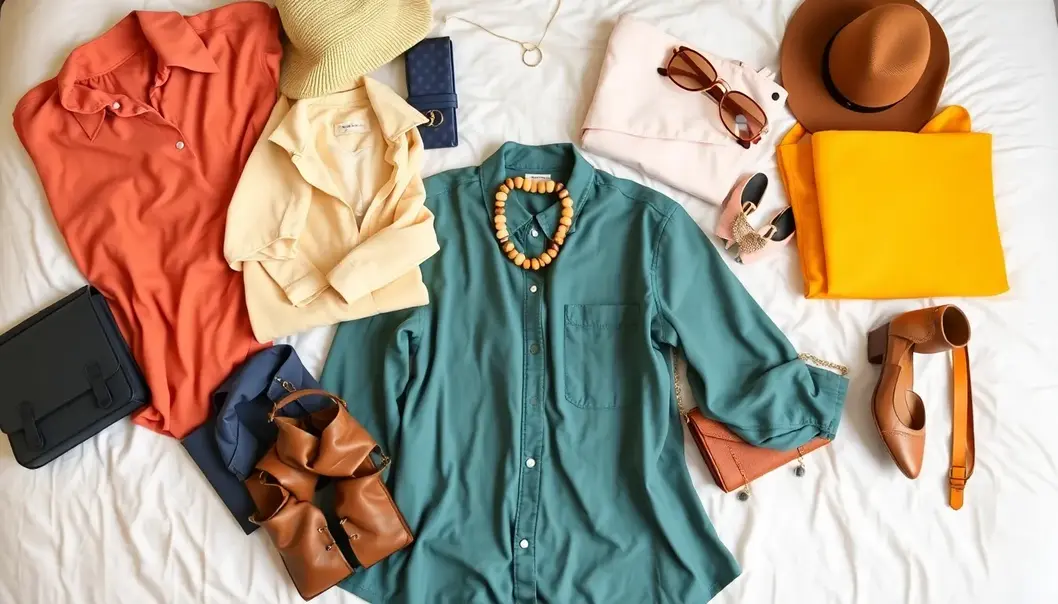Choosing the right colors for your wardrobe can significantly elevate your style and confidence, especially if you’re new to the world of fashion. The hues you wear not only express your personal taste but also enhance your natural beauty when perfectly matched with your skin tone. From discovering whether you have warm or cool undertones to assembling a palette that complements your complexion, understanding how colors interact with your skin is a game-changer in fashion. Our guide will walk you through the essentials of color selection, offering friendly tips that will help you shine brilliantly in every outfit.
Understanding Your Skin Tone

Understanding your skin tone is a crucial step in mastering the art of wardrobe color selection. The natural undertones of your skin can dramatically impact how different colors appear on you and influence your overall look. Identifying whether you have cool, warm, or neutral undertones can help you select hues that enhance your natural beauty and create a harmonious appearance.
A practical method to determine your skin tone is the white sheet of paper test. Stand in front of a mirror in natural light and hold a piece of plain white paper under your chin. Observe how your skin appears against the stark white. If your face looks rosy, pink, or blue-toned, you likely have cool undertones. Conversely, if your skin seems yellow, golden, or peachy, your tone is warm. If it doesn’t lean strongly either way, you might have neutral undertones.
Another straightforward approach is examining your veins. Natural light is your ally here as well. Look at the veins on the inside of your wrist. If they appear more blue or purple, you likely have cool undertones. If they seem greenish, you probably have warm undertones. If you see a mix of both or if they aren’t distinctly one color, you might have neutral undertones.
Recognizing these undertones is not only about matching colors but understanding how they interact with your complexion. For instance, cool undertones pair beautifully with jewel tones like emerald, sapphire, and rich plum. These colors play off the natural pink and blue hues in your skin, making it lustrous. Warm undertones, on the other hand, shine with earth tones like terracotta, moss, and rich yellows, accentuating your golden or peachy skin. Those with neutral undertones enjoy the flexibility of both spectrums—colors that aren’t too warm or cool suit them best, such as muted tones of navy and burgundy.
Common features of each undertone category include skin reaction to the sun and natural hair colors. People with cool undertones tend to burn rather than tan and might have hair with ash or cool blonde shades. Warm-toned individuals may tan more easily and have hair that is golden, auburn, or deep brown. Neutral-toned individuals often have versatile hair colors, adaptable to both light and dark shades.
In conclusion, understanding your undertone is a significant advantage in building a cohesive wardrobe that feels naturally yours. By mastering this, you can gracefully transition to exploring the vivid world of colors in our next segment, Building Your Color Palette.
Building Your Color Palette

Crafting a wardrobe that harmonizes with your unique skin tone begins with building a personalized color palette. After identifying your skin tone, you can start with basic shades that form the foundation of your wardrobe. For those with cool undertones, consider incorporating colors like navy blue, charcoal grey, or soft pastels such as baby blue and lilac. These colors work well because they complement the natural bluish undertones in your skin, creating a balanced and harmonious look.
If you have warm undertones, earthy tones like camel, olive, and rich burgundy will beautifully enhance your complexion. These colors bring out the warmth in your skin by reflecting your golden hues, adding a natural glow. For neutral undertones, you’re in luck: most colors will suit your skin, but stick to softer tones like dusty pink or taupe, which offer a subtle elegance while accentuating your natural features.
Once your basic palette is established, it’s time to experiment with bolder hues. Adding a splash of vivid colors can give your wardrobe depth and variety. For cool undertones, vibrant jewel tones like emerald or royal blue can create standout looks without overwhelming your natural features. Those with warm undertones might try bolder reds or bright coral, colors that emphasize your skin’s natural warmth and vitality. Neutrals can play with shades like teal or raspberry for a harmonious yet striking appearance.
The key to a versatile wardrobe is maintaining a balanced mix of light, vivid, and dark tones. Light tones are great for daytime and casual settings, vivid shades can be used as statement pieces, and dark tones offer sophistication for evening wear or professional environments. By blending these elements, you ensure that your wardrobe is prepared for any occasion and always complements your natural beauty.
As you continue to explore and refine your palette, remember to consider the interplay of colors not just against your skin, but also how they work together in outfit combinations. This practice will maximize the versatility and impact of your wardrobe, allowing you to express your personal style with confidence and flair.
Final words
Choosing colors that accentuate your skin tone is a vital step in developing your personal style. With an understanding of your skin’s undertones and a carefully curated palette, you are now equipped to make fashion choices that reflect your personality and enhance your natural beauty. Remember, confidence is the best accessory you can wear.
Explore more fashion tips and create your perfect wardrobe palette with our expert guides. Stay stylish and confident!
Learn more: https://www.fashiontips.com/color-guide
About us
FashionTips.com offers expertly curated guides and resources to help you discover your unique style. From color advice to wardrobe essentials, we empower you to make informed fashion decisions that reflect your individuality and enhance your confidence.

